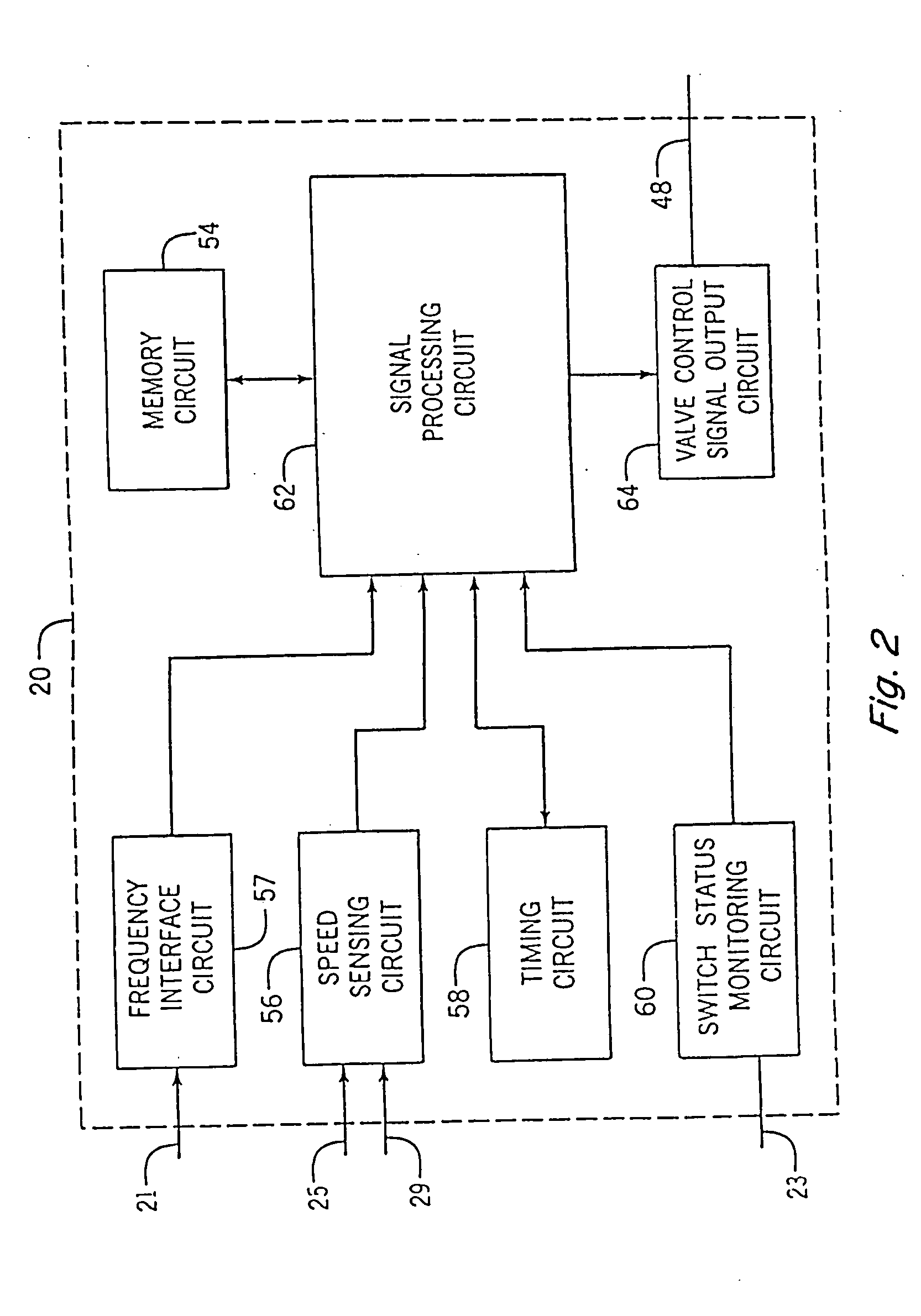Power take-off control system and method
a control system and power take-off technology, applied in the direction of instruments, transportation and packaging, etc., can solve the problems of premature or increased wear on the clutch and other drive line components, and affecting the operation of the power take-off system. , to achieve the effect of shortening the time available for implementing, reducing the rotational speed of the power source or engine, and improving the effect of the
- Summary
- Abstract
- Description
- Claims
- Application Information
AI Technical Summary
Benefits of technology
Problems solved by technology
Method used
Image
Examples
Embodiment Construction
[0030]FIG. 1 depicts an embodiment of a power take-off (PTO) clutch and brake control system 10 for a representative work machine or vehicle, represented by an agricultural vehicle (such as a tractor schematically represented by the dashed line labeled 12) that includes, and is operable according to steps of, the present invention. With the exception of the PTO clutch control system 10, tractor 12 may be a conventional agricultural tractor of the type including a power source which is preferably an engine 14 having conventional accessories such as an alternator 16. Engine 14, in addition to providing power to the drive wheels (not shown) of tractor 12, provides the power to apply rotational motion to a multi-plate hydraulically actuated PTO clutch 18. Depending upon whether PTO clutch 18 is engaged, power from engine 14 may in turn be transmitted to an output shaft 32. Output shaft 32 is shown directly coupled to a 1000 RPM PTO (high speed PTO) shaft 33 and also is shown coupled to ...
PUM
 Login to View More
Login to View More Abstract
Description
Claims
Application Information
 Login to View More
Login to View More - R&D
- Intellectual Property
- Life Sciences
- Materials
- Tech Scout
- Unparalleled Data Quality
- Higher Quality Content
- 60% Fewer Hallucinations
Browse by: Latest US Patents, China's latest patents, Technical Efficacy Thesaurus, Application Domain, Technology Topic, Popular Technical Reports.
© 2025 PatSnap. All rights reserved.Legal|Privacy policy|Modern Slavery Act Transparency Statement|Sitemap|About US| Contact US: help@patsnap.com



